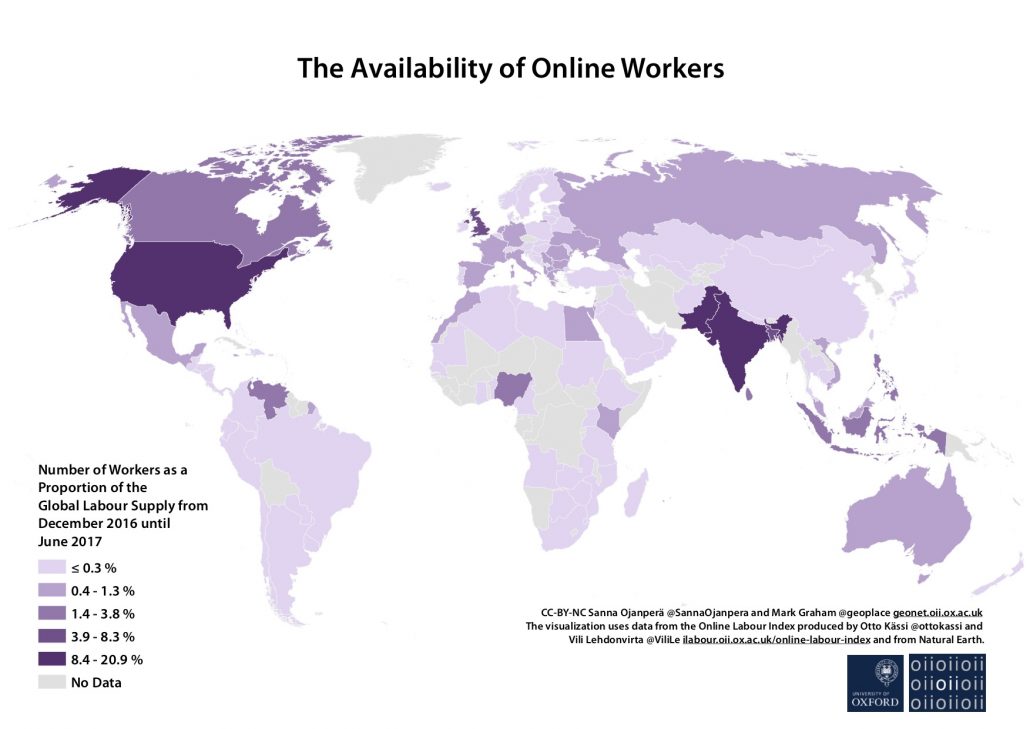In a previous blog post, we’ve mapped the availability of online labour in 2016 [1] using the data provided by the Online Labour Index (OLI) measuring the utilization of online labour platforms [2]. The OLI is based on tracking all projects and tasks posted into a selected sample of platforms, using API access and web scraping.
While this previous exercise focused on mapping the availability of online work in terms of vacancies – or the labour demand, the OLI has recently been complemented with measures for the supply side of online labour – i.e. for the workers registered on the included platforms.
As we’re interested in monitoring the changing geographies of Sub-Saharan Africa’s digital economy, Mark Graham and I wanted to map out the availability of online workers across the world over the period of December 2016 to June 2017. In the illustration below, we calculated the number of workers as a proportion of the global online labour supply for each country that offers employment on the platforms that the OLI measures.
Similar to our previous mapping exercises, the map shows stark patterns of clustered labor supply. Over half of the African countries have no workers on the included platforms and the share of workers hailing from the rest of the continent is below 0.04 percent of the global total, except for three countries in Sub-Saharan Africa: Nigeria, Kenya, and South Africa, and four countries in North Africa: Morocco, Egypt, Tunisia, and Algeria. The online labour markets in Nigeria, Kenya, and South Africa measure 1.79 percent, 0.95 percent, and 0.31 percent of the global online labour market, respectively, while the online labour markets in Morocco, Egypt, Tunisia, and Algeria measure 0.97 percent, 0.62 percent, 0.17 percent, and 0.17 percent of the global total supply, respectively.
The majority of the online labour supply is situated in just a few countries with the United States hosting 20.9 percent of the global total, while smaller shares are supplied by Pakistan at 14.98 percent, India, at 13.58 percent, Bangladesh at 8.28 percent, and the United Kingdom at 7.10 percent of the global online vacancies.
References:
[1] Ojanperä, S. “Mapping the Availability of Online Labour.” Geonet Blog, 21 Oct. 2016, https://geonet.oii.ox.ac.uk/blog/mapping-the-availability-of-online-labour/.
[2] Kässi, O. & Lehdonvirta, V. (2016) Online Labour Index: Measuring the Online Gig Economy for Policy and Research. Paper presented at Internet, Politics & Policy 2016,22-23 September, Oxford, UK. http://ilabour.oii.ox.ac.uk/online-labour-index/
